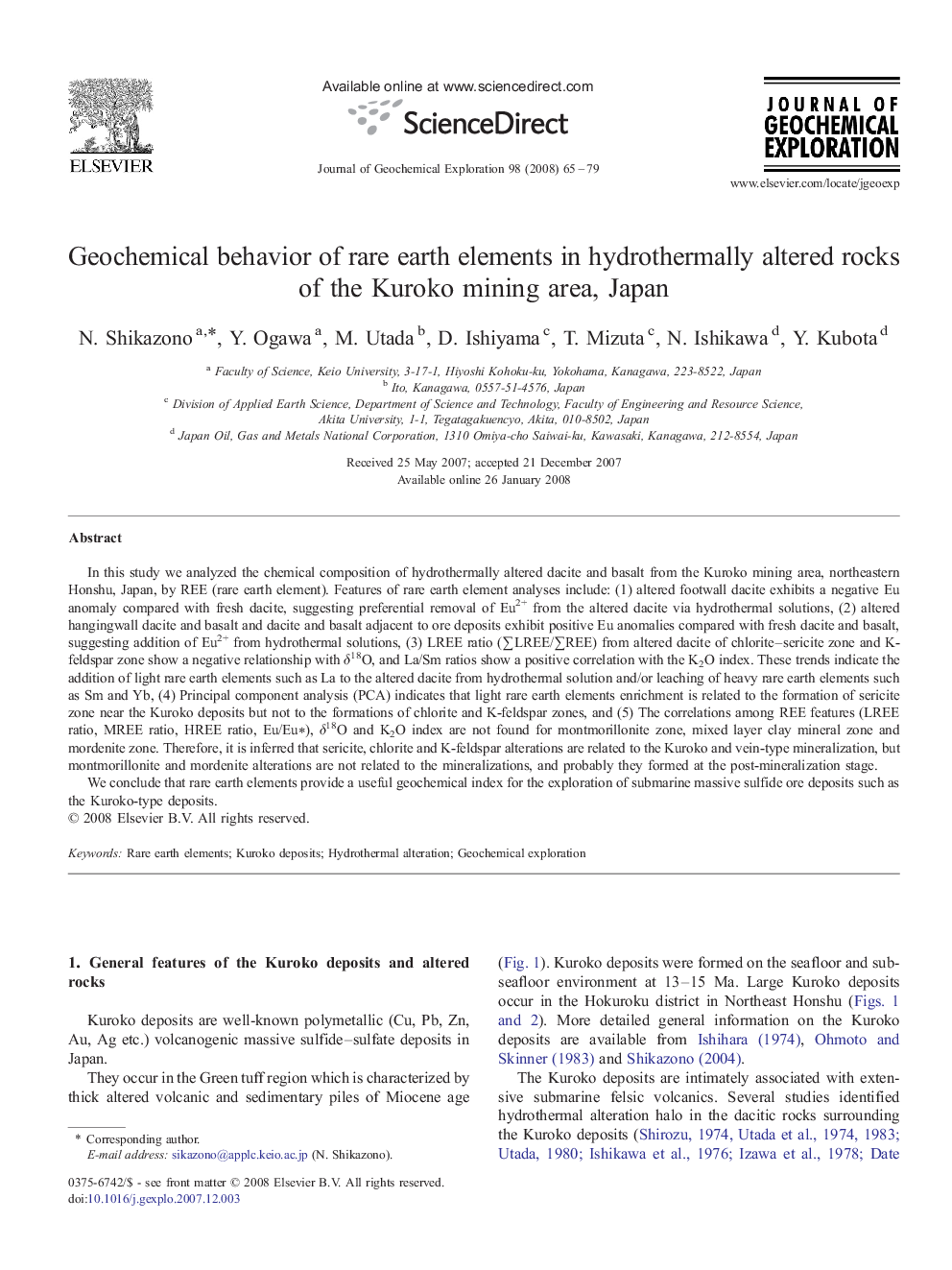| کد مقاله | کد نشریه | سال انتشار | مقاله انگلیسی | نسخه تمام متن |
|---|---|---|---|---|
| 4458261 | 1312663 | 2008 | 15 صفحه PDF | دانلود رایگان |

In this study we analyzed the chemical composition of hydrothermally altered dacite and basalt from the Kuroko mining area, northeastern Honshu, Japan, by REE (rare earth element). Features of rare earth element analyses include: (1) altered footwall dacite exhibits a negative Eu anomaly compared with fresh dacite, suggesting preferential removal of Eu2+ from the altered dacite via hydrothermal solutions, (2) altered hangingwall dacite and basalt and dacite and basalt adjacent to ore deposits exhibit positive Eu anomalies compared with fresh dacite and basalt, suggesting addition of Eu2+ from hydrothermal solutions, (3) LREE ratio (∑LREE/∑REE) from altered dacite of chlorite–sericite zone and K-feldspar zone show a negative relationship with δ18O, and La/Sm ratios show a positive correlation with the K2O index. These trends indicate the addition of light rare earth elements such as La to the altered dacite from hydrothermal solution and/or leaching of heavy rare earth elements such as Sm and Yb, (4) Principal component analysis (PCA) indicates that light rare earth elements enrichment is related to the formation of sericite zone near the Kuroko deposits but not to the formations of chlorite and K-feldspar zones, and (5) The correlations among REE features (LREE ratio, MREE ratio, HREE ratio, Eu/Eu⁎), δ18O and K2O index are not found for montmorillonite zone, mixed layer clay mineral zone and mordenite zone. Therefore, it is inferred that sericite, chlorite and K-feldspar alterations are related to the Kuroko and vein-type mineralization, but montmorillonite and mordenite alterations are not related to the mineralizations, and probably they formed at the post-mineralization stage.We conclude that rare earth elements provide a useful geochemical index for the exploration of submarine massive sulfide ore deposits such as the Kuroko-type deposits.
Journal: Journal of Geochemical Exploration - Volume 98, Issue 3, September 2008, Pages 65–79